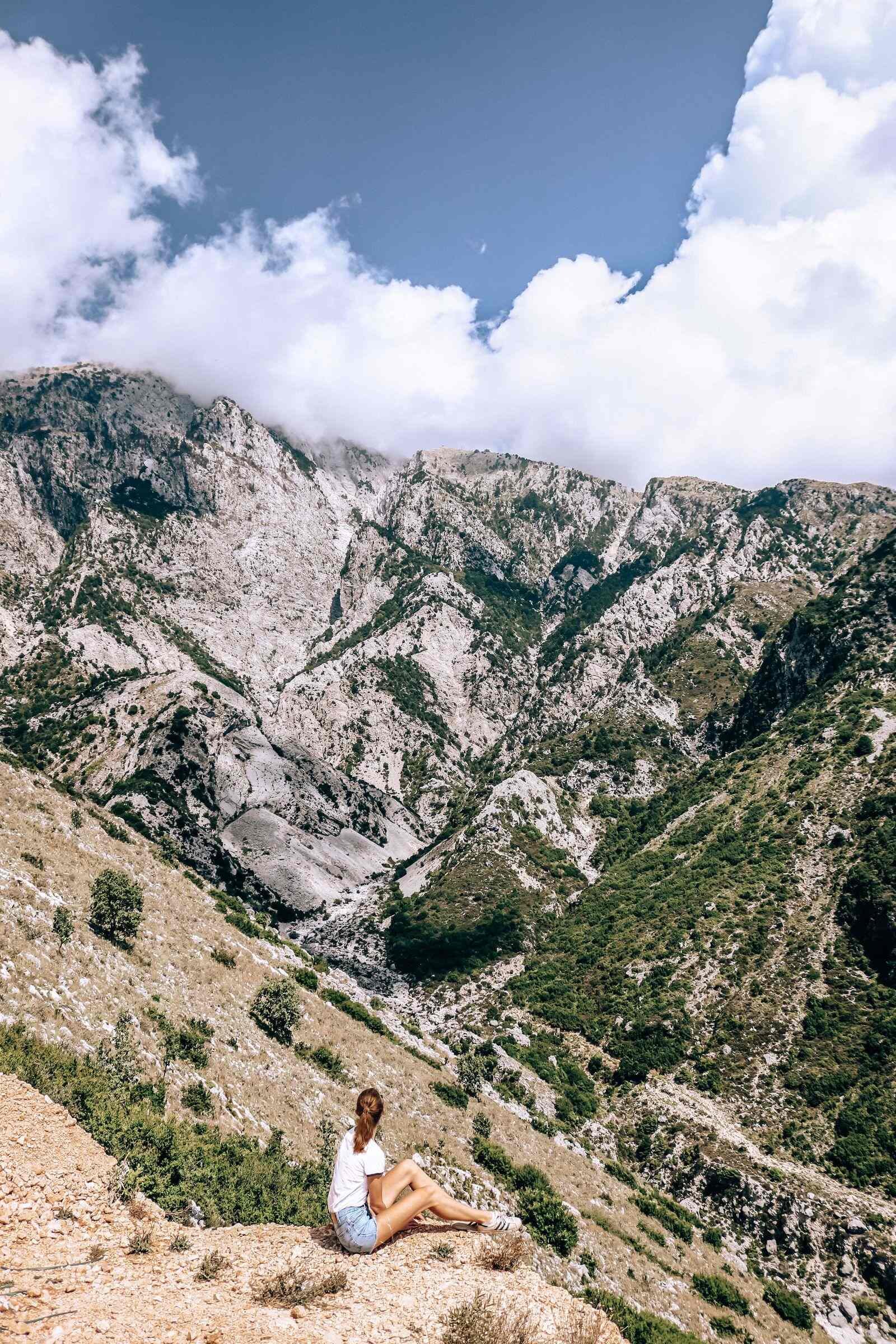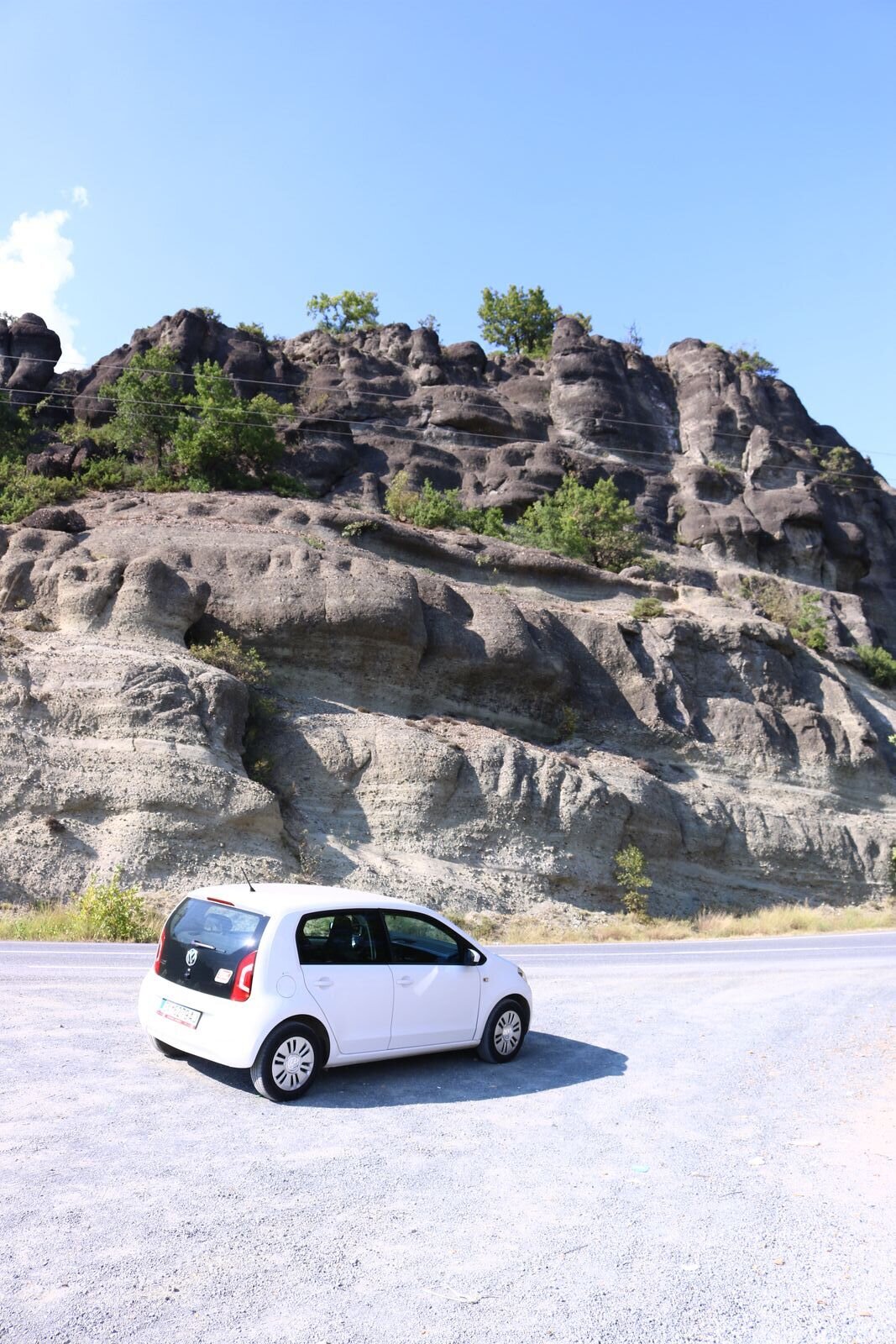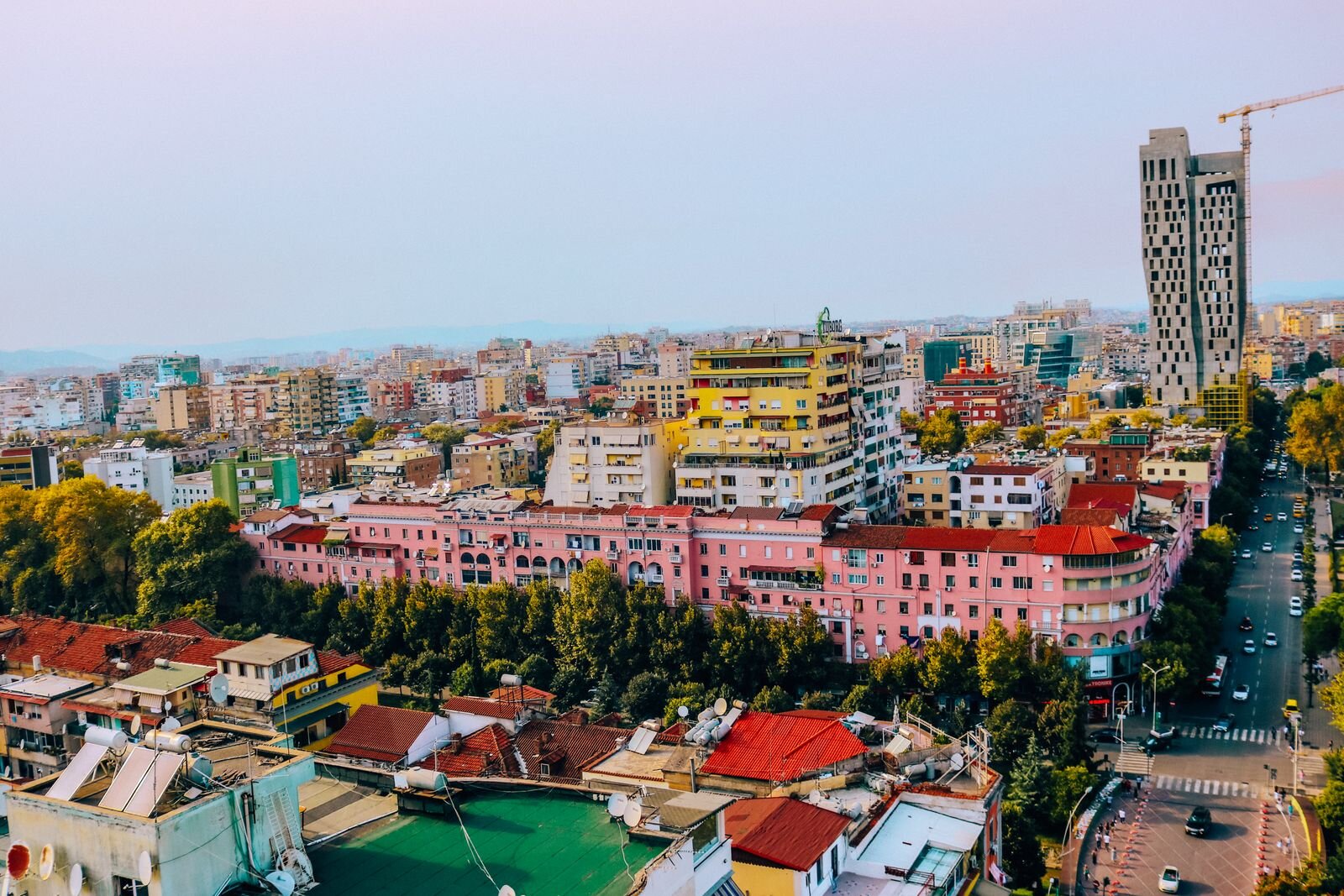Albania has been appearing on the travel radar a lot more recently and I’m sure it will become increasingly more popular - with it’s beautiful beaches and coastline, cities full of history, UNESCO Heritage Sites and friendly, welcoming people, it deserves to become popular and there’s plenty to do on your Albania itinerary!
When I visited I had a lot of people voice concerns about driving in Albania, whether about my personal safety, the dangers of driving there, the notoriously bad drivers, the historic association of dangerous groups who may target travellers - believe me, I heard it all. But I never once felt unsafe, in danger or threatened during my time in Albania. Of course take normal safety precautions as you would anywhere in the world, but this is a country that deserves the tourism industry it’s trying to cultivate.
As of 2019 there are now direct flights to Tirana, but in September 2018 when I visited, there were no direct flights from the UK into Albania. Our decision was to fly into Skopje, the capital of North Macedonia (direct flights from London Luton), rent a car, drive through North Macedonia, northern Greece, Albania and back into North Macedonia where we flew back home from Ohrid (direct flights to London Luton). You can read my full road trip itinerary here - 10 day Balkan road trip itinerary: North Macedonia, Albania and Greece.
A lot of people questioned our decision to drive, roads are notoriously bad in some parts of Europe and considering how young Albania is as a country and the misconceptions about it, driving Albania was a bit of an unknown entity. Except for a few TripAdvisor threads, there wasn’t an awful lot of useful information that wasn’t scaremongering.
So I wanted to write this guide to help and reassure anyone who might be considering driving in Albania and who are looking for useful information from someone who has done it recently.
Disclosure: This post may contain affiliate links, which means I may receive a commission if you click a link and purchase something. While clicking these links won't cost you anything, they will help me to keep this site up and running! Check out the full disclosure policy for more details. Thank you so much!
🚗 I use DiscoverCars for hiring a car abroad. They compare lots of different providers to find you the best price.
What is driving in Albania like?
Well the good news is that the driving wasn’t as bad as the horror stories people had told us before we went. But it wasn’t great either.
We drove through North Macedonia and Greece on the same trip and I have to say, the driving was no worse in either of those countries than it was in Albania. Despite the assumption that drivers in Albania are not great, I’ve seen scarier driving in Malta and Italy than I saw in Albania.
What was noticeable in Albania was just a lack of modern road functions and knowledge. We drove close to 1000km during our time in Albania and we only saw traffic lights in Tirana, the capital city. Everywhere else it was just a kind of free-for-all. Not even any stop signs at junctions. Everything relies on your own responsibility as a driver and hoping others are the same!
Example: at a 4-way junction, no one stopped. Everyone drove into the middle and it became a tangled mess of traffic. People reversing in the middle of the intersection, bumping into each other, trying to get out. But that was normal, no one was particularly angry, it just happened. But obviously it’s not something we would usually see in our home country!
The history of driving in Albania
If you think about the history of Albania, it kind of makes sense. Albania was, until only 26 years ago, a Communist state, isolated from the international community and with closed borders. Cars were expensive to own and run, only people in a position of power in the government usually had cars. Work was primarily manual labour on the land or in your town, you had no need to drive. Isolation from other countries meant there was no imported vehicles, limited petrol used only for military or farming machinery.
We spoke to one local Albanian in his twenties and his father grew up under Enver Hoxha’s government. In the 1990s when Communism fell, no one had a driver’s licence because they’d never needed one. When regulations started to come in about what tests you had to do to own and drive a vehicle, older generations in particular struggled to understand why - they’d never needed a license before, why should they get one now?
Similarly, Albania is still building and expanding its infrastructure. As of September 2018 there was only one stretch of modern motorway in Albania, the kind of motorway or highway as we know it - the A3 running into the capital city of Tirana. This means a lot of people until recently may never have driven on a road with more than 1 lane travelling in each direction!
Example: We were driving on this A3 highway, just a short stretch into Tirana, when the traffic started to slow. There was a tanker blocking all three lanes. It had missed its exit. Obviously if you do that then you’re supposed to just carry on and come off at the next exit. In this case, people just aren’t used to not being able to do what they want. So the tanker had stopped, was doing a 3-point turn in the road then driving back along the highway IN THE WRONG DIRECTION then came off at the turn he’d just missed. No one batted an eyelid.
Tirana, Albania
Road quality
Most of the other main roads are generally fine, like the coast road or the roads that lead to the borders always had road markings and although they were slightly more potholed than you might be used to, it was nothing of too much concern. They are all single lanes though so if you’re stuck behind a slow vehicle, especially on the mountain passes, then you could be stuck for a while.
If you are driving out into the countryside the roads are a bit more hit or miss. We would be on a brand new re-surfaced road one minute then on a bumpy stone track moments later.
Even using Google Maps you would worry you’d taken a wrong turn down a farmer’s track but it was a normal road that hasn’t been resurfaced yet. We experienced this most when we crossed the border initially into the Butrint National Park area and also on our way east towards Berat and Central Albania.
To help you feel a bit more prepared if you’re considering driving in Albania, here are some things you should know.
They drive on the right side
Great news if you’re from pretty much anywhere else. I’m from the UK though and adjusted pretty quickly to driving on the righthand side as I’ve done it several times before.
UK/US licences or International Driving Permits are valid
But if you stay in Albania for longer than a year then you need a full driving licence. You have to be 18 or over to drive and rental companies usually require you to be over 25.
Hire a rental car, preferably with some good ground clearance
A huge truck isn’t necessary but something sturdy with good ground clearance for the rural roads and potholes is a good idea. Also a 4x4 might be useful for the big hills and untreated roads you will encounter.
Albania is covered in 70% mountains, unless you’re experienced I wouldn’t recommend driving here in the winter, roads will be slippy and you will need snow chains.
If you’re considering renting a car during your time in Albania, I would suggest checking Discover Cars for the best car hire rates and deals. In Albania and the rest of the Balkans we struggled to find the usual rental car companies, however Discover Cars has over 500 suppliers in 10,000 destinations so it shows deals from local companies you might not otherwise find (we ended up renting with Sharr Express). Discover Cars booking process is super easy and seamless. You can check their reviews on Trust Pilot here.
Keep your documents handy
While we were never stopped, it is useful to have all your documents ready. We had heard that cars with foreign plates (ours were Macedonian) were often stopped and checked but as long as you have your green card proving your rental car insurance and rental car agreement, as well as your licence, you’ll be fine.
There are no traffic lights or stop signs
Be hyper-vigilant and alert because often junctions are unregulated. We only saw traffic lights in Tirana but the rest of the country lacked signage, street lighting is very poor unless you’re in a major city and Albanian drivers can be erratic.
Statistically Albania has one of the highest death rates from road traffic accidents in Europe
However we did not see any traffic accidents in our entire time there.
People use their car horn a lot
This is not always in anger, it’s often a warning of approach or an approaching incident or accident ahead. Rurally they use it to warn if they’re about to overtake you.
Be confident
Whilst I’ve just told you to be alert and hyper-vigilant, there is not a give-way or right-of-way culture in Albania. You’re going to need to be assertive and pull out at some point and then someone is more likely to stop and let you in.
There is very little signage
There are basic markers directing you towards certain towns and cities but don’t expect mile markers or any info about road closures ahead. We encountered a rock fall blocking the road but nothing had stopped us driving all the way up there then having to turn around and drive back again. Also be wary about unmarked roadworks, pot holes and sharp bends.
Keep your distance
People will just stop right in front of you. On the rural roads, in the city, on the highway. No signal, no indication. Keep you distance.
Traffic police are surprisingly present
We saw a lot of traffic cops out and about all over the country. They seem to just visually check your speed and hold up a sign asking you to stop. It’s very odd and very manual and there is no speed check warning signs as we are used to in the UK.
Don’t speed - know the limits
40km/h in cities
80km/h outside built up areas
90km/p on main intercity roads
110km/h on motorways or highways
Because of the traffic cops around, don’t risk going faster than you should be. Cars would often come up close behind me but don’t feel pressured to speed up. They are more confident on those roads than you are so just let them overtake when they’re ready or pull over and let them pass if you prefer.
People will do what they want
Road rules as you know them are sometimes adhered to, but not often. Generally speaking the drivers in cities are better than in the countryside but give everyone a wide berth and greater stopping distance because they will stop or turn around or pull up at a moments notice.
If there is a road rage fight, don’t get out the car
We did see some fights on the road side that got physical and drivers were sometimes aggressive during traffic jams or hold ups. However situations like the tanker turning in the road or the intersection jam, people remained calm. It’s very hit or miss but your best bet is to just not react and carry on your journey.
Some roads don’t exist on a map
Albania is still developing its infrastructure and some new roads exist which aren’t on satnavs or Google Maps yet. Just continue on in the general direction and you’ll find yourself back on the correct route soon enough.
Using SatNav or Google Maps
We downloaded offline maps on Google and also had a back up hotspot device to get wifi if we needed navigation. You might prefer to hire a Navigation Device from the car rental agency for an additional fee if you prefer.
Stay calm
I found it easier to just accept that driving in Albania was going to be a bit of a mixed bag, we’d probably get lost, miss a turn, get yelled at or stuck in a traffic jam. But if you just accept that it’s part of the road experience in Albania, be safe, be alert, keep your distance and don’t worry if something goes wrong, you can always turn around or drive back if you miss a turn - just don’t panic!
Save this post for later to help you plan your trip in the future!
Flights: I use Expedia to find great flights and the best deals all over the world, they have regular sales and offers so I always check their website. I also check CheapOair to find cheap deals on round trip flights.
Car Rental: I love the customer service I've always gotten and the variety of options with Rental Cars. But for short notice rentals, I've been using Expedia for the last year, they always seem to have great one-day rates or last-minute rates from the main rental companies.
Accommodation: I prefer the flexibility of booking accommodation with Booking.com so I can cancel or change my reservation without a fee or only pay on arrival for most properties. For longer or more unique stays I prefer AirBnB because you can get the long stay discount, you can also find more unique properties and book experiences with talented locals and businesses. For my budget trips, I always stay in hostels and book through Hostelworld because they have great guarantees if anything does go wrong. If you arrive and your booking is not at the property, they refund the full deposit AND give you $50 extra credit.
Tours and organised trips Although I don’t use tours that often, I do like to book local experiences or day trips once I reach my destination. For that I use GetYourGuide because it has the biggest selection and variety of tour and experience options.
Travel Insurance: I currently use SafetyWing Nomad Insurance. Which allows me to pay a rolling monthly fee to cover my long term travels.
My camera gear and equipment: I use a Canon 77D with an 18-135mm lens or a 50mm lens. And a DJI Mavic Mini Drone. For all my gear including laptops, tripods and more camera accessories read my travel photography gear guide.



